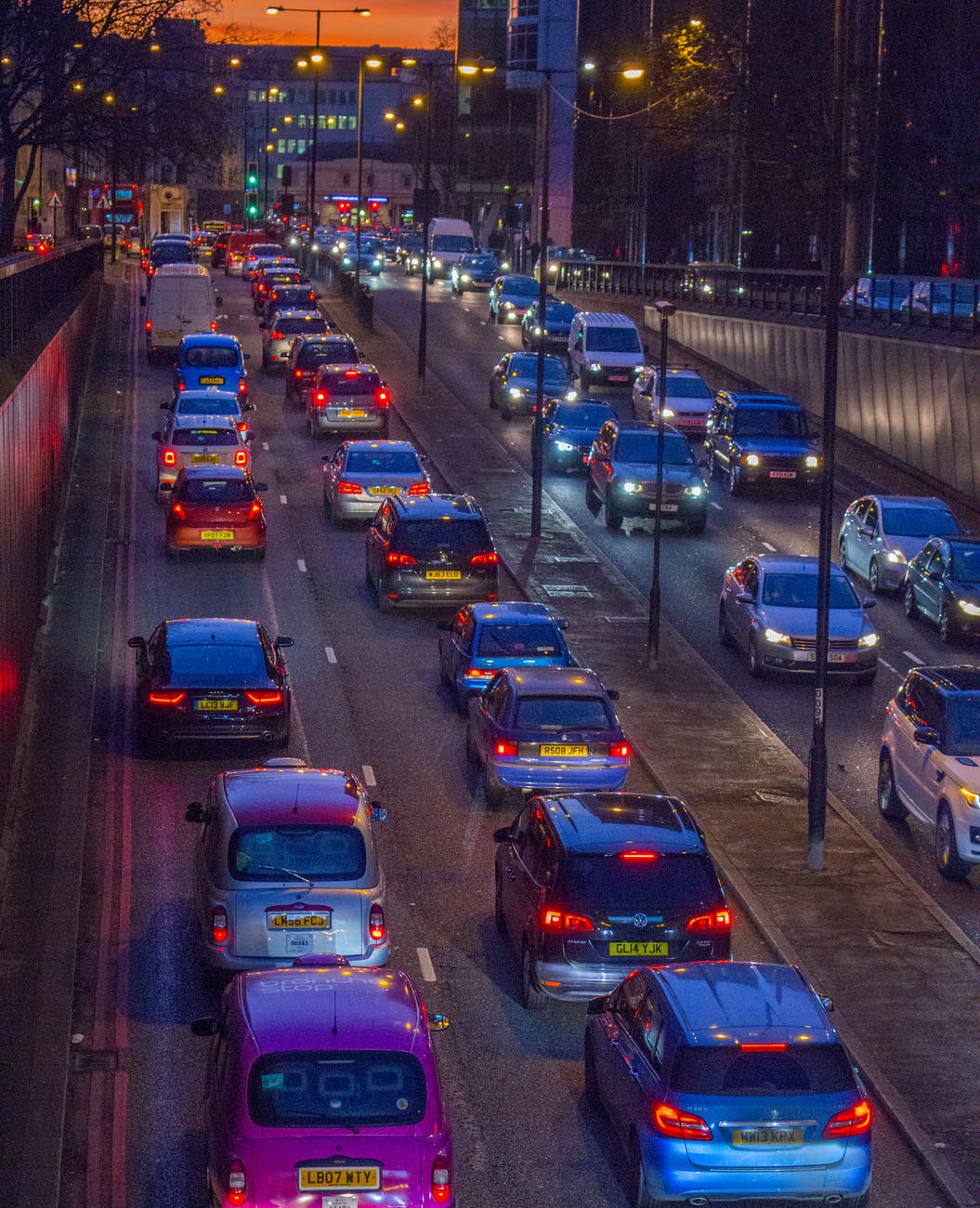An interview with Matt Cole, conducted before his departure as the President of Cubic Transportation Systems. Interviewed by Gordon Feller, Founder of Meeting of the Minds.
Gordon Feller: One question that’s often asked by public sector executives who’re responsible for their city’s transport services: ‘how should city leaders be thinking about the future of urban transit?’
Matt Cole: We’re in an exciting period of history; it’s now possible to see the potential for truly unlocking the multi-modal journey as a competitor to single occupancy vehicles. This is being caused partly by increased investment in public transit, at least in some locations. Some breakthroughs are possible now because of the arrival of new forms of mobility, whether it’s bike-share, scooter-share, ridesharing, carsharing, and more. There are so many different options available now for people to use in their urban journey. This means connecting to public transit has become a more viable option because people can take these other services from their first mile, or their last mile, to transit. Therefore, promoting transit is a genuinely viable option for many more in the city, relative to driving their cars from point A to point B.
How should elected and appointed officials think about these new urban mobility options?
Matt Cole: I think that it’s time for public officials to be promoting transit as the most efficient form of travel. And it’s also time for them to build partnerships with the ecosystem of other mobility providers, in order to enable easy access to public transit. Working together, these stakeholders can lead in two ways: designing what mobility network they want in the future in their locality, and building the necessary partnerships to tie into that platform.
There are many different dimensions of the 360-degree viewpoint which you’re putting forward here. You’ve personally spent a lot of time pioneering, and developing, a new approach that’s sometimes called ‘Mobility-as-a-Service’ (MaaS) What exactly is MaaS, and where does Cubic fit in all of that.
There are multiple definitions out there of “mobility-as-a-service.” These range from some of the early-stage approaches, which focused on subscription plans and pricing, and not necessarily the outcomes. But, in my own view, that approach to “MaaS” was trying to promote all sorts of things that needed to exist in order to enable mobility. My own view is this: we’re working to enable mobility networks in cities and regions that promote journey choices. The emphasis is on journey choices that can range from the most affordable to the most efficient, or the most environmentally sustainable. But the aim is to enable all of the possible journey choices for all of the possible travelers. That means addressing the needs of every customer segment that needs to travel within a given city or region. We’re trying to enable those choices for everyone.
How are you and Cubic doing this?
We do this by delivering three primary elements. First: An integrated user experience allows you to plan, book, and pay for all of your journeys in one place.
Second: A single account system that enables that booking and payment component. This allows you to have all of your payment transactions in one place which are related to how you move on the ground. Should governments and public officials want to do so, they can take an integrated approach. This means that a single fair price exists for a single journey – even one that might consist of a scooter-share, a transit-ride, and a bike-share, for example. That single account system underpins the user’s integrated account information, but equally crucial is integrated policy for public officials in government.
Third: An integrated network management tool which allows cities and regions to optimize how individual operators collectively respond to incidents and anomalies. This is focused on the many varied ways that the transportation system is performing on any given day.
It sounds like Cubic’s new approach, and the new type of services that you offer, are not about simply doing a better job with fare collecting, or doing a better job with tracking asset flows or revenue flows through the transit system. Now you’re providing solutions that touch on many of the other local priorities, things like public safety.
Yes, absolutely.
In the hundreds of cities where you operate, Cubic is not known by many as a comprehensive services provider. Can you talk a little bit about how that’s manifesting in some of the places where you have a very large footprint, such as London and New York?
For eight years we’ve had a mobility-as-a-service strategy that we call NextCity. Some people haven’t necessarily seen Cubic’s transformation during that eight-year period, but the fact is that our business significantly broadened from what it used to be. We have the benefit of a phenomenal legacy in leading the transit payments industry for nearly five decades. But in the last decade, particularly in the last eight years since we launched NextCity, we filled out many other business elements. Within our payments business, for example, we’ve developed a tolling business, which enables us to provide the tolling system for such complex places as the U.S. State of New Hampshire.
We’ve filled out a suite of APIs that enable integration of first-mile and last-mile transport modes. We have a mobile applications and mobile payments business. In terms of the application that transit riders will use to pay for their journeys, this business has 61 percent of the U.S. transit market committed to it. And aligned to that, but separately, we’ve formed a business called Cubic Interactive, which is a mobile advertising offers and loyalty business.
Would you describe one key example?
We’ve diversified the business, especially in terms of transportation network operations management and optimization. We’ve made a series of acquisitions and organic investments. For example, we acquired NextBus in 2013 because they’re a leader in predicting when buses are going to arrive at their stop. Their technologies make that information available for both agencies and travelling public.
Would you describe one more example?
In 2013 we acquired a U.K. traffic management business that mostly focuses on small highways and motorways, which, in the American phraseology, means freeways. Their technologies detect something that’s happening on a road, such as a disabled vehicle, through the use of various kinds of sensors. They bring that information back to a control room, where software programs analyze the incident and provide operators with options and roles. The aim is simple: to enable corrective actions which they could take in order to deal with the situation. Since that acquisition was first made, we’ve invested new resources into that business.
In what ways are the pieces of the puzzle being put together by the organizations that operate complex transportation networks?
We recently won a really exciting contract in Sydney, Australia. This one is probably closest to what we’ve been talking about here. It’s an intelligent congestion management program which has a truly multimodal control room and a multimodal response platform. The platform allows Transport New South Wales, which is the lead agency down there, to predict 30 minutes into the future what’s going to happen on their transportation network, and then to act within five minutes.
We also founded Urban Insights in 2014, an analytics team created to deliver data-driven insights that will shape the urban transportation network of the future, enable greater mobility, and make cities more efficient in the provisioning of transportation services. In the past year, we also acquired two businesses that are associated with intersection management and optimization of the flow of traffic through an intersection. They do so by using sensor technology to determine demand from north, south, east, and west – and then prioritize red and green, in directions that enable the most flow through the intersection. We built out quite a suite of businesses that can deal with both safety and network optimization challenges which cities have, all related to transportation.
How does a public sector executive help his agency to pay for some or all of those interesting services? Is it sufficient to look at the farebox in the public transit system, or is there a need to do public-private-partnerships? Or, is there some other model that you have in mind when you talk with public agencies about these new kinds of services?
No doubt about it: there are going to be different funding sources available for many of these projects. In general, the majority of our contracts come from a combination of capital and operating dollars that the agencies have, on the operating side. Obviously, a portion of that comes from the farebox. But, in the case of both capital and operating budgets, it’s to differing extents. Funding streams from local, state/provincial, and federal government do play a key role. The majority of our projects are financed that way. Some recent large capital raises have been noteworthy, such as the very recent one by the New York MTA, with their new capital plan to fund initiatives like this, as well as much bigger ones. In general, that’s what we’re seeing with regard to the sourcing of funds.
Are there some useful alternatives?
Yes. We’re building a system right now in the City of Boston which is a true “P3contract” A public-private partnership (PPP or P3) is a contract between a public sector entity and a private sector entity that outlines the provision of assets and the delivery of services. … It facilitates and, in some cases, manages partnerships on behalf of public sector agencies. We’ve partnered with the John Laing Company who’ve formed a joint venture with Cubic to raise the financing needed to build systems. That’s certainly an option which is available for much bigger technology projects like that one.
There are other options. For example, when we built the Chicago Ventra system, Cubic actually financed that from its balance sheet. Chicago Transit Agency was the primary customer that repays the system build over an operational services term. We did something similar with LA Metro for their new mobile app: they’re paying Cubic nothing upfront, and all of our payment stream is based on transaction fees that will come to us once we’ve launched the application. Thus, there are different funding models out there, but the most prevalent one is agencies using a combination of farebox and government funding to pay for new services.
Funding is certainly one big challenge lurking in the minds of public sector executives who want to do this. Can you talk about one or two other big obstacles that you and your team have seen? Since you’ve described some funding strategies, and how to blow up those obstacles, maybe there are one or two other obstacles that can be overcome which you’d want to highlight here?
One obstacle which is particularly related to MaaS is the complexity of the environment. Look at places like Los Angeles or San Francisco Bay Area or Frankfurt or Brisbane or Sydney. Setting aside mobility-as-a-service for a moment, just look at the transit network. Those cities which I just mentioned have integrated complex transit networks through a single payment system. It’s a combination of private and public bus and rail operators, plus ferry operators in some of them. In some cases you have a convening organization, such as the Bay Area’s Metropolitan Transportation Commission, but often times you don’t.
LA ‘s lead agency is LA Metro, yet more than 20 regional partner operators there don’t have any kind of hierarchical relationship to LA Metro, and these operators are participating in that same network.
It’s no small feat to address the relationship management challenges, and to work through the various and different contractual agreements which need to be put in place in order to integrate those services. Obviously, that situation gets more complex once you start bringing in other public agencies (such as a tolling agency or a congestion charging agency), as well as private operators (such as ride-share, scooter-share, bike-share).
Setting aside the funding and the business model challenges, what is the major obstacle?
It is this: who’s going to be lead coordinator? Who brings together the combination of private and public sector organizations that really need to partner in order to make MaaS work. As in the case just highlighted with L.A. and San Francisco, a public agency needs to take that lead. I believe that needs to be done in a way where the public interest, meaning the welfare and the needs of every individual in the region, is considered. I don’t know how you do that unless it’s public agency that takes the lead.
We’re talking here about the challenges created by digital innovation for transit and transport in the city. The privacy and security of personally identifiable digital content has become top-of-mind for many public sector executives. Whether it be a rider on the transit system purchasing a fare, or downloading an app, or navigating the city using that app, public agencies increasingly hear distress from the public about data security and data sanctity. The pushback which Sidewalk Labs has seen in Toronto was very much one part of that story. Can you talk about Cubic’s thinking on the digital security of personally identifiable data?
We must give people a choice. We need to give people a promise of value flowing back to them. We need to make a commitment that their information is safe. We live in a world where people want to share their information in varying amounts of detail. Some people are prepared to share a lot about themselves, in some cases on social media, while other people are quite private in the ways they conduct their lives, wanting to share as little as they possibly can. I think that needs to be respected; technology platforms need to be architected and built to give people that choice. How much information do you want to share, and yet still be able to enjoy the core benefits of the city mobility system?
One example here: in all of our SmartCloud systems, transit riders can choose whether they register their card, or not. If they would rather their card not be linked to their identity, they can use the card anonymously, and they still enjoy the majority of the benefits of the system. Whereas, those who choose to register their card and link it to their identity enjoy incremental benefits. These include card protection (if they lose their cards), or they can do a balance transfer, for instance. But, fundamentally, whether you register the card or not, you still get most of the benefits of the system. For those who do choose to share their information, we’ve got to make a promise to them: we’re going to use that information, but in a way that makes their lives better.
Helping commuters to proactively and predictively manage their journey is possible because you know a bit more about them?
Yes, and Cubic Interactive is designed to give the commuters a direct economic benefit. Given the complex cyber environment we’re all living within, systems that do hold private information need to adhere to the very best data protection standards.
What you’re doing with MTA in New York or with Transport for London is not your traditional contract for services. Since cities essentially are partnering with Cubic, it’s not in the form of a traditional vendor relationship. You’re jointly solving problems. after the local agencies sign a contract, these solutions aren’t just being handed to them on a silver platter. How do you think about your partnerships with public agencies?
It’s certainly an aspiration for us to have all of our customer relationships reach such a partnership standard. For me, the definition of a partnership is that it’s not an arms-length relationship where one party procures a defined thing from another party. Instead, we strive for jointly working together as partners towards a common outcome. Obviously, in the end you are two separate organizations and each organization has its own priorities, its own measurements, and its own needs. When you find a way to align those things, such that you create partnership behavior, that’s when you really see phenomenal results. And certainly, in places like London and Brisbane and New York, we’ve achieved those things because we have great working partnerships there.
Can you share your big picture view of what can be expected in 2020 and beyond, by way of progress? For instance, how will Cubic intersect with AV solutions that are coming soon to a street near you?
There are connected vehicles, and then there’s autonomous vehicles (AVs). I do think that the potential for AVs is incredible, especially in terms of the new mobility services which become available. Also, we can expect the ability with AVs to more completely optimize the flow of traffic. But AVs are still quite some time away from being prevalent in our cities. Thinking now about near-term use cases that we will see in 2020, look to Trafficware and GRIDSMART. These are the intersection optimization businesses which we acquired, and they’re making some exciting progress with connected vehicles. They enable cars to talk to infrastructure, and to other cars, as they approach intersections. In 2020 this will make it possible for traffic signals to tell the car how many seconds it’s going to be until they turn red, or what average speed they need to maintain so they arrive at the intersection perfectly, as the light turns green.
Link: https://meetingoftheminds.org/the-future-of-city-mobility-33159?mc_cid=54bd9f8b3c
Source: https://meetingoftheminds.org

















Leave a Reply